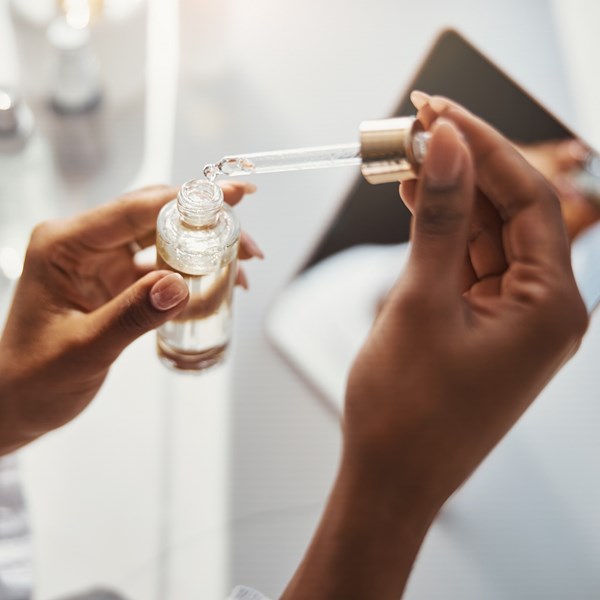In a case concerning genetically modified mice that are engineered to produce a range of hybrid human/mouse antibodies, the multinational biotech company Regeneron sued Cambridge company Kymab for patent infringement.
In its defence, Kymab argued that Regeneron’s patents were invalid for failing to meet the requirements of sufficiency of disclosure, a patent law which requires that the disclosure made by the patent must enable skilled practitioners to make the invention for themselves. Kymab succeeded in invalidating Regeneron’s patents at the High Court for insufficiency of disclosure, but Regeneron appealed the decision and it was overturned at the Court of Appeal. The issue before the Supreme Court was whether it was enough that the skilled practitioner could have made mice incorporating a short region of human antibody genetic material, when the patent claims covered incorporation of a much longer region.
BACKGROUND
Sufficiency of disclosure is at the heart of the “patent bargain”, by which the patent holder is granted a monopoly of a limited term in which to commercially exploit an invention, and the public is permitted to work the invention after the expiry of the monopoly. According to established jurisprudence of the UK courts and the European Patent Office (EPO), a patent must disclose at least one way of working the claimed invention and enable a skilled practitioner to work the invention across the breadth of the patent claims.
THE FACTS AND ARGUMENTS
Therapeutic antibodies are an important class of biological agents. In nature, antibodies are produced by B cells which have undergone a process of genetic recombination in the antibody variable region, accounting for the huge diversity of antibodies that can be produced.
Regeneron’s patents claimed a new type of genetically modified mouse capable of producing hybrid human/mouse antibodies. The genome of the claimed mouse includes a hybrid version of antibody genetic material, in which the antibody constant region is encoded by the mouse’s DNA, and the antibody variable region is encoded by inserted human DNA. The diversity of antibody structures that can be made by the mouse depends upon the diversity of the inserted human genetic segments from which the variable region may be recombined in the mouse’s B cells.
At the priority date of Regeneron’s patents in 2001, a skilled practitioner could have inserted some of the human variable region DNA into the mouse genome to form a hybrid antibody gene. However, the ability to insert the full complement of human variable region gene segments was realised for the first time in 2014 by Kymab.
Regeneron argued that its invention resided in a “principle of general application” in the hybrid human/mouse antibody gene structure, which cured the problem of “immunological sickness” in mice which were engineered to produce fully human antibodies. According to Regeneron, the full range of mice covered by the patent would benefit from this principle, irrespective of the extent of the inserted human genetic material, and it was not necessary for the patent to disclose how to insert the full human variable region gene locus.
Kymab argued that the disclosure of Regeneron’s patents was insufficient because the full range of mice covered by the claims could not have been made at the priority date.
JUDGMENT
The Supreme Court ruled in Kymab’s favour, by a majority of four to one.
In the majority judgment, Lord Briggs noted that for a product claim, a sufficient disclosure requires the skilled practitioner to be able to make the product. As a basic principle, if the patent holder were able to obtain a product monopoly without disclosing how to make the product, the “patent bargain” would not be fulfilled. Furthermore, other inventors would be deterred from conducting the research and development in fact necessary to take advantage of the inventive idea.
Lord Briggs reviewed EPO and UK case law and distilled the principle that a disclosure cannot be regarded as sufficient if the teaching in the patent enables only some but not all of the products within a claimed range to be made. The leading EPO case on sufficiency across a range is T 409/91 (Exxon/Fuel Oils), in which Exxon had claimed a monopoly over fuel oils which had wax crystals having an average particle size of less than 4,000 nm. The claimed range of particle size was held to be insufficiently disclosed because the teaching in the patent did not enable fuel oil to be produced with a wax crystal size below 1,000 nm. It was irrelevant whether the invention resided in a “principle of general application” that small crystals do not clog filters. Lord Briggs distinguished over T 292/85 (Genentech I/Polypeptide expression), which claimed processes and the resulting products which produced specific polypeptides using a range of bacteria, plasmids and regulons, wide enough to embrace types which had yet to be made available at the priority date. In T 292/85, sufficiency had been upheld, but a key difference was that whatever variant within the range of bacteria, plasmids and regulons was chosen, the same polypeptide product was produced.
The Exxon reasoning, and not the Genentech “exception” applied to the facts of the case at issue, and Lord Briggs found that the UK case law approved the Exxon principle.
In his judgment, patent holders may rely upon a principle of general application if it would appear reasonably likely to enable the whole range of products within the scope of the claim to be made. But they take the risk, if challenged, that the supposed general principle will be proved at trial not in fact to enable a significant, relevant, part of the claimed range to be made, as at the priority date.
The requirement to show enablement across the whole scope of the claim applies only across a relevant range, i.e. a range which relates to a variable which significantly affects the value or utility of the product in achieving the purpose for which it is to be made.
Application of the principles shows that the claims were invalid for insufficiency, because it was not possible at the priority date to combine more than a very small part of the human variable region gene locus with the mouse constant region gene locus, in the same hybrid gene structure. The limited quantum of human genetic material that could have been inserted at the priority date would have limited the diversity of antibodies that could have been produced. The range of the quantum of human genetic material was therefore a relevant range for sufficiency purposes, and the patents did not enable mice at the more valuable end of the range to be made.
IMPLICATIONS
At first sight, the Supreme Court judgment does not change the law that for a product claim, sufficiency of disclosure requires substantially the whole of the range of products within the scope of the claim to be made available by means of the disclosure of the patent.
However, the treatment of the Court of Appeal’s judgment, and the dissenting judgment of Lady Black, which basically approves the reasoning of the Court of Appeal, reveals some of the judgment’s wider implications.
Lord Briggs acknowledged that the Court of Appeal may be right, that the consequence of confining the patent holder with a ground-breaking invention to protection only over a range of products which the invention enables to be made at the priority date will give the patent holder scant and short-lived reward for their efforts and ingenuity.
Product inventions which embody a principle of general application will only be sufficiently disclosed if the full range of products covered by the patent claims can be made at the priority date.
It often takes many years and much investment for a conceptual invention to be reduced to practice in a way that is commercially successful. As such, ingenuity will be required to draft patents providing meaningful patent protection to such early stage inventions. It will be important to assess, on a case by case basis, the likely claim scope that would be sufficiently disclosed, and take this into account when devising a patent filing strategy.







